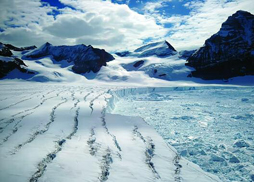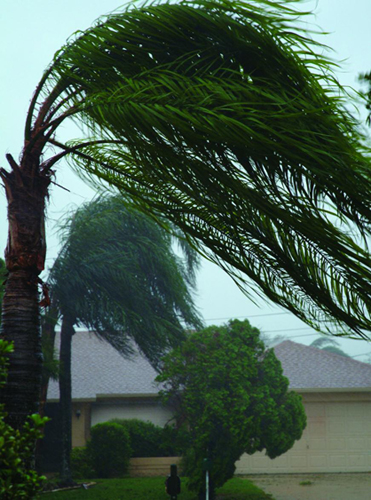SEASONS, CLIMATE, AND TEMPERATURE
Seasonal Change, Warm Rays
Each area of the Earth has a unique climate based on the weather conditions, like temperature and precipitation, that occur over a period of time. Scientists determine the climate of an area by recording weather conditions over the course of years to create an average.
 The arctic has a cold climate.
The arctic has a cold climate.
Deserts are generally dry and warm, while the tropical rain forest is warm and wet every day. Polar regions, on the other hand, are perpetually cold. These consistent patterns of temperature and precipitation determine the climate of each region.
Seasonal Change
Have you ever wondered why the weather changes with the arrival of spring, summer, winter, or fall? Seasonal changes are a direct result of the sun and our Earth's relationship with it.
The Earth completes its orbit around the sun in a year. As it travels through space, the Earth is tilted on its axis. If the part of the Earth where we live is tilted toward the sun, the sun's light shines directly on us and we experience the warm temperatures of summer.
When the Earth reaches the opposite side of the sun, our part of the Earth is tilted away from the sun. We still receive warmth and light, but it does not reach us directly. This causes the cooler temperatures and shorter daylight hours of winter.
 Leaves changing color is a sign that fall is here.
Leaves changing color is a sign that fall is here.
Even when our part of the world is tilted toward the sun, we don't all receive equal amounts of warmth and light. The hottest parts of our Earth are located near the equator. The equator is the widest part of the Earth, so it is closer to the sun than other areas.
As the surface of the Earth curves toward the poles and away from the sun, the temperatures become cooler. That's why the North Pole and South Pole are the coldest regions of the Earth.
These differing temperatures are also responsible for a lot of our wind. Hot air near the equator rises and moves toward the poles. Heavy, cold air at the poles sinks and moves toward the equator. This cycle keeps our atmosphere in constant motion.
Warm Rays
For this activity, you will need a globe and a flashlight. Place the globe on a flat surface. Turn on the flashlight and turn out the lights in the room. Stand about 12-18 inches (30-46 cm) from the globe and shine the flashlight directly at the equator. What difference do you notice about the amount of light shining on the equator as opposed to the poles?
 Heavy winds and rain take their toll on the baranches of these palm trees.
Heavy winds and rain take their toll on the baranches of these palm trees.
Additional topics
- STORMS - Lightning and Thunder, Calculate the distance of lightning, Fronts, Floods, Tornadoes, Hurricanes, Categories of Hurricanes, Blizzards
- AIR ALL AROUND US - The Atmosphere
- Other Free Encyclopedias